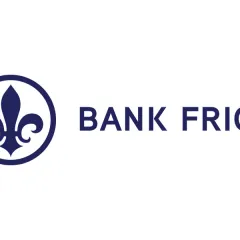“Institutional investors need to take a closer look at digital assets”
Making bitcoin tradable on the stock exchange: even for an industry giant like US asset manager VanEck, it was an unexpectedly protracted project – that ultimately ended with great results, with the VanEck Vectors Bitcoin ETN now successfully listed on Deutsche Börse.
Since the launch of VanEck Vectors Bitcoin ETN at the end of November 2020, people have been constantly asking Dominik Poiger for information: How and where can my customer buy the product? What exactly is meant by the term “cold storage”? “It’s a huge opportunity to engage with our customers about an innovative product”, says VanEck’s product manager, “and the response since launch has been overwhelming.”
Poiger and his cryptocurrency-savvy colleagues have been working towards this moment for more than three years: “We’ve long been trying to set up an ETF based on bitcoin in the United States.” However, VanEck’s original plan failed due to the regulator’s hesitant stance on bitcoin. “For many regulators, bitcoin continues to be a controversial asset”, says Poiger. “But the oldest cryptocurrency has long since established itself and is poised to become digital gold.”
Poiger finds a receptive partner
Poiger found the perfect ally to implement the plan to make bitcoin easily accessible to European investors in Gabor Gurbacs, Director of Digital Assets Strategy at VanEck. In 2017, Gurbacs, a well-known personality in the area of cryptocurrencies, spent an extended period of time at the VanEck office in Frankfurt, where Poiger is based. “When we were in the process of drafting the legal documents, the question of whom we would hire as custodian for our bitcoin came up.”
It’s a small world, as you know: a colleague of Poiger’s at the time had connections to Liechtenstein. He knew and got him in touch with Raphael Haldner, who works as Head of Fund and Capital Markets at Bank Frick. After an initial inquiry was sent off to Liechtenstein, Haldner entrusted Julian Gretzinger with the matter. The team leader of Capital Markets at Bank Frick recalls: “We of course saw it as a real honour to have an industry giant like VanEck come knocking at our door.”
Liechtenstein Blockchain Act as a basis
Dominik Poiger learned that there are also financial market regulators who definitely have an open ear for innovations in the area of crypto. “After other regulators made it clear to us that they would not be approving a bitcoin-based product, we looked around for countries that were more open to the project”, says Poiger. He tried in Switzerland, for example: “However, the regulatory environment in Switzerland is autonomous – so the product would not have been available throughout Europe.” The choice was ultimately made in favour of EEA country Liechtenstein. It not only guaranteed market access to Europe due to its location but was also one of the first countries in the world to create the basis for classifying bitcoin in a legally sound manner thanks to its Blockchain Act, which was passed at the beginning of 2020.
Put through its paces
The project gained momentum in the summer of 2020, when VanEck began due diligence on Bank Frick. “We were put through our paces by the risk management staff at the VanEck headquarters in the USA”, says Gretzinger. The auditors left no detail unnoticed, wanted to know exactly how the deposited bitcoins are kept in custody, how IT security would respond to specific scenarios and how the core banking system is structured. The auditors ultimately greenlighted the project.
The head office giving permission to proceed was also because the bitcoins are held in custody at a regulated full-service bank in Europe. This is a security argument that can be used to score points, especially among discerning investors.
From physical to digital gold
Ultimately, VanEck has a reputation to defend. In 1955, founder and namesake John van Eck laid the foundation for a company that today manages around 65 billion dollars by launching one of the first international equity funds on the stock exchange. Van Eck was also the mastermind behind the first gold equity fund in the United States, which he established in 1968.
Over the past 50 years, the company had regularly attracted attention with innovative fund solutions. “It therefore fits the mould that we are the first well-known asset manager to launch a bitcoin-based product on the stock exchange”, says Dominik Poiger. The entrepreneurial spirit of the asset manager, led in the second generation by Jan van Eck, allows employees to actively deal with topics that other industry leaders shy away from.
Julian Gretzinger also appreciates the advantages of a family-run company: “Compared to other banks, family-run Bank Frick is extremely agile and really geared towards providing maximum benefit to the client.” Tailor-made products like the bitcoin ETN from VanEck could not be planned on a drawing board. “When unforeseen problems arise, we solve them as quickly as possible. We have a very client-centric approach.”
“Growing together on the project”
Gretzinger’s counterpart at VanEck is full of praise for the cooperation with Bank Frick: “I have never experienced such personal support and attention before. As quickly as my e-mail inquiries were answered, I sometimes had the feeling that Julian was looking after us exclusively”, Poiger says with a laugh. “I believe that both of our companies have grown during this project: Bank Frick has learned what requirements asset managers like us want to see fulfilled. We have learned how we need to position ourselves to succeed in the extremely dynamic environment of digital assets and how people with Bank Frick’s expertise can help us do that.”
“We don’t chase after short-term trends”
After the successful launch of the Bitcoin ETN, it is clear to Poiger that other similar products will follow in future. “As a company, we are not set up to chase after short-term trends.” On the contrary, the importance of bitcoin and other digital assets will increase greatly. “That means that institutional investors like us also need to take a much closer look at them.” However, the current project first needs to be brought to conclusion, because one important detail is still missing: “Due to the coronavirus pandemic, we have not yet been able to celebrate the launch of our ETN together – but we’ll manage to squeeze that in at some point!”
Share post

Related Posts

How Blockchain Enables Transparency and Efficiency
Blockchain technology, first demonstrated in 2010 through a historic Bitcoin transaction, has evolved far beyond cryptocurrencies, offering solutions for transparency, efficiency, and decentralization across industries. Its core principles—decentralization, transparency, and immutability—enable secure, peer-to-peer transactions without intermediaries. Innovations like Ethereum's smart contracts have expanded blockchain's capabilities, impacting supply chains, automation, and governance.
Despite concerns about energy use, modern blockchains are increasingly energy-efficient, and misconceptions about complexity or security often stem from misunderstandings. For nonprofits, blockchain offers transformative potential: donations can be transferred quickly, cost-effectively, and transparently, ensuring more funds reach beneficiaries while improving accountability and impact measurement.
As blockchain reshapes societal structures and trust, it presents nonprofits with powerful tools to amplify their impact. Organizations willing to embrace this innovation will be well-positioned to drive meaningful change in an interconnected digital world.

Insights into the process of designing AMCs
Since their introduction, Actively Managed Certificates (AMCs) have become a significant component of the European financial market. As a structured product, legally classified as debt securities, they hold a counterparty risk for the investor that is comparable with other structured financial products. AMCs are securitised, which gives the holder the right to cash repayment or the delivery of an underlying asset. As the buyer, the investor becomes a creditor of the issuer and thus dependent in terms of the type and amount of repayment, which is subject to different parameters.

Direct market access – efficient trade execution for fund strategies
Liechtenstein has a long-standing tradition in the fields of banking and asset management. Since joining the EEA in 1995, Liechtenstein’s financial centre has established itself as a professional point of reference for promoters of collective investment vehicles on the European financial market.

Ensuring the future of insurance with blockchain technology
The insurance market is an essential part of the global economy, covering both personal and business risks. Thus, it is no wonder that it is one of the largest industries in the world, boasting an estimated value of about USD 5 trillion and employing about 2.7 million people across the globe. Out of USD 5 trillion, around USD 3.7 trillion makes up the value of the global life insurance market, while the value of the property and casualty insurance market carries a value of USD 1.3 trillion.

Tokenisation: A new way of representing assets
Ever since the dawn of time, human beings have hunted and gathered, collecting the things they discovered and making them their own. This was when the concept of ownable assets first emerged, albeit in rudimentary form. Since then, assets have evolved and become more complex as humans have found more reliable ways to connect assets to people. Today, people enter into legal contracts when transferring assets.

Blockchain: A technology with social impact
Foundational technology is the most effective tool for impacting society at large and solving the challenges it is faced with. One such foundational institutional technology is the blockchain, which entered the picture through the discovery of Bitcoin in 2009 and has since proliferated and emerged in many different forms.
What does blockchain’s social impact look like?

How blockchain technology protects us from bad actors in our digital future
The blockchain industry has experienced significant growth in the last couple of years as one unicorn after another sprouts from the soil that grows crypto start-ups. In this new series of blog posts and webinars, we take a closer look at the technology and explore why it is so successful and why everybody is talking about it. We also look beyond the speculative aspect that blockchain is so frequently associated with and focus on the real-world problems that the technology is poised to solve.

Wie klassische Finanzintermediäre in der Krypto- und Blockchain-Welt Fuss fassen können
Mit zunehmender Selbstverständlichkeit fragen immer mehr Kunden nach Dienstleistungen rund um Kryptowährungen. Für Finanzintermediäre eröffnet diese Nachfrage neue Geschäftsmöglichkeiten. Um das Potenzial heben zu können, müssen die Akteure aber auch das Spezialwissen zur Verfügung haben.

Blockchain technology reinvents correspondent banking – just not yet
As one of its major use cases, blockchain technology is said to transform traditional correspondent banking. So far major challenges have pushed back this transformation. It is more likely than ever that with central bank digital currencies on the horizon; blockchain disruption will finally come to fruition in the realm of cross-border banking.

Turning crypto investment into an earning asset
With Ethereum upgrading to Proof of Stake, the crypto world is going through one of its most transformative shifts to date. This means that customers will soon be able to earn interest on their digital asset holdings through a process called staking. What staking is, how it will define the future of Ethereum and digital asset custody at large is explained in this article.


